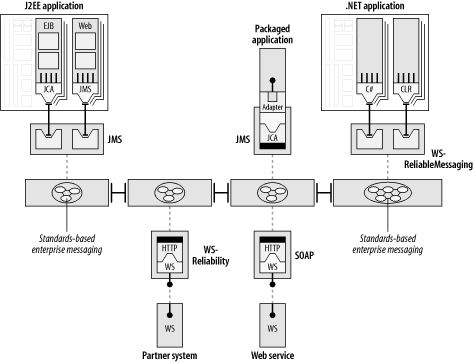6.2 Messaging and Connectivity at the Core
Enterprise Service Bus: Theory in Practice ISBN: 0596006756
EAN: 2147483647 Year: 2006
Pages: 126 Authors: David Chappell
flylib.com © 2008-2017. If you may any questions please contact us: flylib@qtcs.net |
